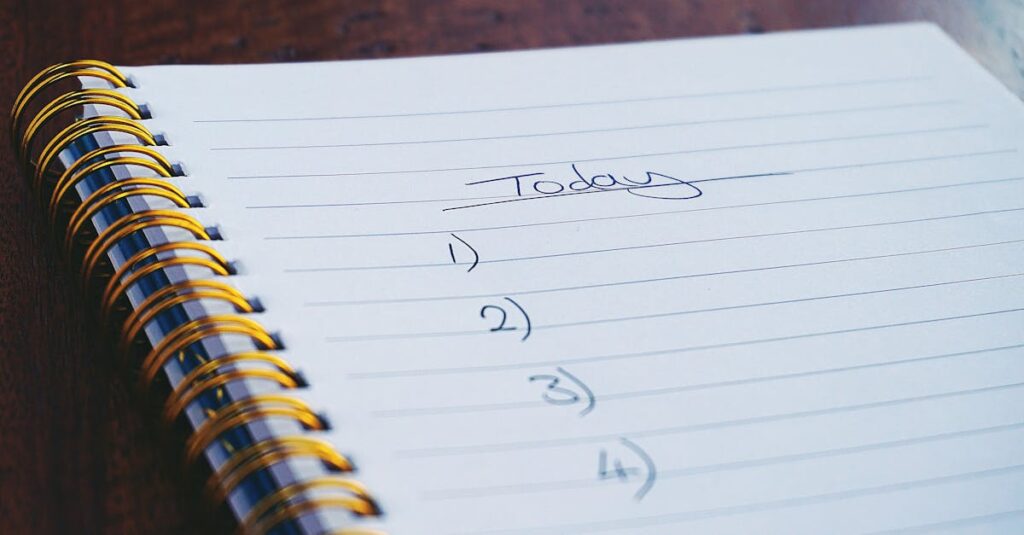Do your big goals keep slipping because daily demands hijack your time? The 1‑hour rule for productivity cuts through the noise. By carving out just one focused hour each day for your most important task, you build momentum, stay energized and prevent burnout. This simple framework turns scattered effort into consistent progress, no matter how busy your schedule.
What is the 1-hour rule for productivity?
- Set aside one uninterrupted hour to work on your top priority each day.
- Treat this focused hour as a daily investment in yourself—whether you’re learning a skill, launching a project or training for a race.
- Deep work sessions improve productivity and creativity (Harvard Business Review).
- Minimizing distractions helps you enter a flow state and finish tasks faster.
Why It Works: The Science Behind Consistent Progress
Allocating one hour each day may seem small, but it builds a compound effect. Psychologists call this the power of small wins—regular, incremental progress triggers dopamine release, keeping you motivated. It also combats procrastination by breaking large goals into manageable chunks. Studies on digital habits show that productivity apps are used by millions of people to stay on track (Statista), while time blocking is rated as one of the most effective productivity strategies.
How to implement the 1-hour rule for productivity
- Choose your hour: Pick a time of day when your energy and focus are highest—morning, midday or evening.
- Set a specific goal: Define what success looks like for each session, whether that’s writing 500 words or practicing scales.
- Eliminate distractions: Turn off notifications, close unnecessary tabs, and create a clutter‑free workspace.
- Break tasks into micro actions: If your goal is big, divide it into 15‑minute segments so you always know your next step.
- Track your progress: At the end of your hour, jot down what you accomplished. Over time, you’ll see patterns that help you optimize future sessions.
Staying Motivated Without Burning Out
Consistency beats intensity. Instead of cramming, show up daily.—this is the essence of the 1-hour rule for productivity Build supportive habits—like prepping your workspace or doing a quick warm‑up—that prime your brain for focused work. If you’re new to habit stacking, check out our guide How to Build Better Habits in 7 Days. Morning routines can also set the tone for your day; our article Why Morning Routines Are the Real Secret to Motivation dives deeper into how a powerful morning ritual fuels productivity. Remember to schedule breaks and celebrate small wins to avoid burnout.
Key takeaways for the 1-hour rule for productivity
Digital tools can keep you accountable. From simple timers to full-fledged productivity apps, choose what works best for you. According to recent usage data from Statista, productivity apps have seen a significant increase in daily active users, highlighting the growing demand for tools that make us more efficient. For actionable tips on building positive habits, Forbes’ guide to daily habits explains how small rituals can transform your personal and professional life. But tools are only helpful when paired with intentional focus—Harvard Business Review notes that attention management is a core skill for sustainable productivity. Use these resources to tailor the 1‑Hour Rule to your lifestyle.Harness digital tools to support the 1-hour rule for productivity and stay on track.
- One focused hour a day leads to consistent progress.
- Break big goals into manageable tasks and track your results.
- Use productivity tools wisely and prioritize your attention.
- Support your hour with positive habits and recovery.
What if I can’t find a whole hour?
Break it into two 30‑minute sessions or even four 15‑minute blocks. Consistent effort matters more than the exact duration.
Complementary Productivity Strategies: Pomodoro & More
To further elevate the 1-hour rule for productivity, consider blending it with other proven methods. The Pomodoro technique divides your hour into 25-minute focused sprints followed by 5-minute breaks. This interval-based approach keeps your mind fresh and helps you maintain momentum throughout the hour.
You might also explore the “5-hour rule” popularized by Benjamin Franklin and adopted by leaders like Bill Gates and Elon Musk. It emphasizes dedicating one hour a day, five days a week, to deliberate learning or skill-building—an ideal complement to your daily productivity routine. For quicker decision-making, some people swear by the 48-hour rule; commit to acting on a new idea within two days to avoid procrastination and maintain forward motion.
- Pomodoro Technique: Work in 25-minute intervals with short breaks to sustain focus.
- 5-Hour Rule: Spend one hour per day on learning to grow skills and creativity.
- 48-Hour Rule: Commit to executing on ideas within 48 hours to prevent procrastination.
FAQs
Can I apply the 1-Hour Rule to multiple goals?
What if I miss a day?
Don’t worry—life happens. Get back on track the next day, and avoid letting one missed day turn into a missed week.
What is Elon Musk’s 1-hour rule?
Elon Musk’s so-called 1-hour rule is a principle of dedicating uninterrupted time to the most pressing problems. It encourages blocking out at least one hour for focused, high‑priority work without distractions, rather than scattering attention across meetings or emails. Musk has reportedly organized his schedule into five-minute slots to optimize productivity, but the underlying idea is the same: treat your attention as a precious resource and concentrate it deliberately.
What is the 2 minute rule for productivity?
Popularized by productivity expert David Allen, the 2 minute rule states that if a task can be done in two minutes or less, you should do it immediately rather than defer it. This prevents small tasks from piling up and keeps momentum going. While the 1‑hour rule helps with deep, meaningful work, the 2‑minute rule is a companion strategy for handling quick tasks efficiently.
Similarly, Jeff Bezos’ one‑hour rule encourages leaders to reserve a quiet hour for high‑level thinking and reading. By protecting this time, you can make better decisions and achieve maximum productivity, reinforcing the idea that focused hours are more effective than scattered multitasking.












